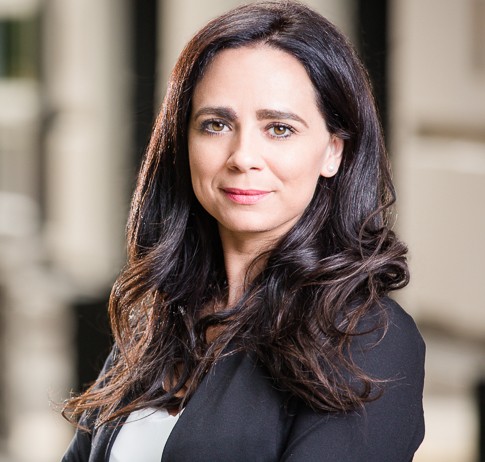Article
Are Alternative Dispute Resolution ('ADR') mechanisms the way to resolve cultural property disputes?
20 December 2022 | Applicable law: England and Wales, EU | 5 minute read
Since Cambridge's Jesus College returned a Benin Bronze in October 2021, many museums in the global north have followed suit this year. The Horniman Museum in the UK agreed to repatriate 72 bronzes, the Smithsonian National Museum of African Art in the USA transferred ownership of 29 bronzes and Germany signed a restitution agreement with Nigeria covering some 1,100 works. While the Benin Bronzes saga seems to illustrate a current success story for museums and States alike, an abundance of cultural property remains scattered around the globe.
In this Insight, we explore how ADR mechanisms may help to solve cultural property disputes.
What are the characteristics of cultural property disputes?
Sensitive cultural and political considerations are at the core of these disputes. On the one hand, museums have an educational interest in displaying artefacts. On the other hand, States and/or indigenous communities may consider such artefacts to be part of their cultural heritage. The legal ownership of these pieces is not always clear-cut and their provenance difficult to trace. Hard-fought cultural property disputes often require careful balancing of competing claims.
How are cultural property disputes traditionally solved?
Art disputes, including the return of cultural property, are traditionally resolved through recourse to local courts. In Iran v The Barakat Galleries,1 Iran brought a claim against Barakat, an art gallery, demanding the delivery up of a number of carved jars, bowls and cups which it claimed had been illegally excavated from a historical Iranian region. Barakat disputed Iran's claim to ownership of the collection and the antiquities' alleged provenance. Barakat also contended that it had acquired good title to the antiquities when it purchased them. The English High Court found that Iran had no proprietary claims to the antiquities. This decision was overturned on appeal. Finding in favour of Iran, the Court of Appeal decided that English courts could assist in the matter through the recognition of Iranian ownership laws, thus determining that Iran had the right to recovery of the artefacts.
In other cases, interested parties may resort to extensive and complex negotiations to obtain the repatriation of cultural property. For example, the Euphonious Krater, an ancient terra cotta calyx crater of VI century BC, had been stolen from an Etruscan cemetery in Cerveteri (Italy) and became part of the collection of the Metropolitan Museum of Art in New York in the '70s. Italy claimed the repatriation of the Euphonious Krater. This artefact was returned to Italy three decades later in 2008. However, many other art restitution matters remain unresolved to date, the most well known being the case of the Parthenon marbles.
These examples illustrate that resolving a cultural property dispute is by no means a quick or easy task. A confidential, flexible and tailor-made approach may help to find a successful outcome for both parties involved in such political and complex cross-border restitution disputes.
What are the advantages of ADR mechanisms to solve restitution disputes?
ADR mechanisms revolve around the role of impartial parties (arbitrators or mediators) without involving the national courts of one country, thus putting aside national bias concerns. ADR mechanisms are often not limited by the procedural constraints of national courts. For example, proceedings may be held in private and remain confidential, the applicable law may be public international law or laws not related to the jurisdictions of the interested parties, and arbitrators or mediators may have the required public international law and art and cultural heritage expertise to find a solution that looks beyond a binary result.
Mediation is an often-used ADR mechanism to solve cultural property disputes. At the international law level, the 1970 UNESCO Convention on the Means of Prohibiting and Preventing the Illicit Import, Export and Transfer of Ownership of Cultural Property (the "1970 UNESCO Convention") provides a common framework for the States Parties on the measures to be taken to prohibit and prevent the import, export, and transfer of cultural property. 142 States have ratified the 1970 UNESCO Convention, but restitution applies only after the entry into force of the 1970 UNESCO Convention in both States concerned. The Convention allows State parties to make restitution requests via diplomatic channels by providing evidence to support their claim. The main constraint of this mechanism is that the 1970 UNESCO Convention is not retroactive, meaning that artefacts and antiquities taken during the colonial era do not fall under its application.
The Intergovernmental Committee for Return and Restitution (“ICPRCP”), created in 1978, is a permanent intergovernmental body independent of the 1970 UNESCO Convention. The ICPRCP deals with the return and restitution of lost cultural property occurred before the entry into force of the 1970 UNESCO Convention.
The World Intellectual Property Organization ("WIPO") in Geneva offers a mediation option for art and cultural heritage disputes. WIPO mediation is initiated via a unilateral request for mediation by one party.
International arbitration may also be a valuable ADR mechanism to solve cultural property disputes. In addition to confidentiality and flexibility, arbitrators may decide cultural property disputes by awards that are final and binding as well as enforceable in more than 170 States thanks to the New York Convention on the Recognition and Enforcement of Arbitral Awards. In 2018, the Netherlands Institute of Arbitration created the Court for Arbitration for Art ('CAfA') in the Hague to solve art-related disputes, including cultural property ones. The CAfA provides for tailor-made arbitration rules and a panel of arbitrators and experts in art and cultural property.
How can we help?
With a leading expertise in both art law and public international law, Withers' Art Law lawyers advise on complex international art and cultural property disputes to find solutions as unique as a piece of art or cultural property, tailored to your needs and – where possible – with benefits to both parties. If you have questions, please contact Eleni Polycarpou and Camilla Gambarini.
- Government of the Islamic Republic of Iran v The Barakat Galleries Limited [2007] EWCA Civ 1374.



